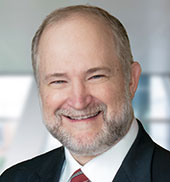After three years of negotiations between several constituencies, including pathologists, dermatologists and other specialist associations, Illinois has joined 25 states that have enacted laws addressing the practice of some ordering physicians, which is to add charges for their services to claims for pathology services they order, but do not supervise or actually perform.
The Illinois law, which went into effect Jan. 1, 2015, addresses the fee splitting and disclosure issues underlying SB 1630.
Illinois is the eighth state with an anti-markup law and the seventeenth state with a disclosure law for anatomic pathology services. Virginia’s statute served as a model for Illinois.
An earlier 2013 version of the legislation proposed a ban on direct billing by ordering physicians; the measure encountered pushback from insurers who were concerned with out-of-network processing and the administrative burden of those arrangements. Insurers anticipated having to contract with a new set of out-of-network providers, a process that would add more burdens and not solve the basic problem of added cost to insurers and patients.
The various state laws addressing these issues fall into one of three categories:
- Direct billing
- Anti-markup
- Disclosure
Illinois’ law addresses anti-markup and disclosure but does not require direct billing.
Implementing the law
Under the law, the physician ordering the anatomic pathology study must:
- Provide the name and address of the physician or laboratory that provided the anatomic pathology service; and
- Disclose the actual amount paid or to be paid for each anatomic pathology service.
In sum, the new law prohibits ordering physicians from marking up, or directly or indirectly increasing, the amount to a patient, insurer, or third-party payer without required disclosure as delineated above.
The law does not prohibit ordering physicians from charging an acquisition or processing charge if the charge “is limited to actual costs incurred for specimen collection and transportation,” and the charges are separately coded in conformance with American Medical Association coding policies.
To avoid violations of the new law, it’s a good practice to justify charges using internal records. The statute’s reference to “actual costs” should be understood to mean internal costs and not be confused with charges. Additionally, the costs should be consistent with separately coded service distinct from the performance of the anatomic pathology service. Various state laws regarding anti-markup of anatomic pathology services, disclosure of mark ups and direct billing mandates create significant compliance burdens for multi-state organizations.
Additional issues and unintended consequences
A literal reading of Section 3.3 (d) of the Illinois anti-markup law appears to carve out and completely exempt a transaction if an ordering physician uses a hospital laboratory. Although we doubt that was the legislative intention, it is what the statute says. Notwithstanding that interpretation, however, our advice to physicians who order but do not perform or supervise the relevant tests is to comply with the disclosure and coding requirements. We believe, based on the several attempts to amend the law since it became effective, that the result of Section 3.3 (d) was not intended and will likely be addressed in the future.
One issue giving rise to the law was physicians’ practice of making arrangements with laboratories to mark up below the reimbursement level of many commercial insurers, so insurers were unaware of the extent of the practice. However, insurers have typically denied these mark-ups when claims are submitted with any type of disclosure. If denied by insurance, properly disclosed separate charges can be billed to the patient under the new statute.
We anticipate the legislature will consider further refinement of the law, particularly with regard to which state agency is charged with enforcement of its provisions.


















